Art Criticism
I Ventured to Michael Heizer’s Remote Land Art Masterwork—And Left Transformed
The pioneering land artist and renegade visionary turned 80 this week. We celebrated by visiting his desert masterpiece 'City' and will never be the same.
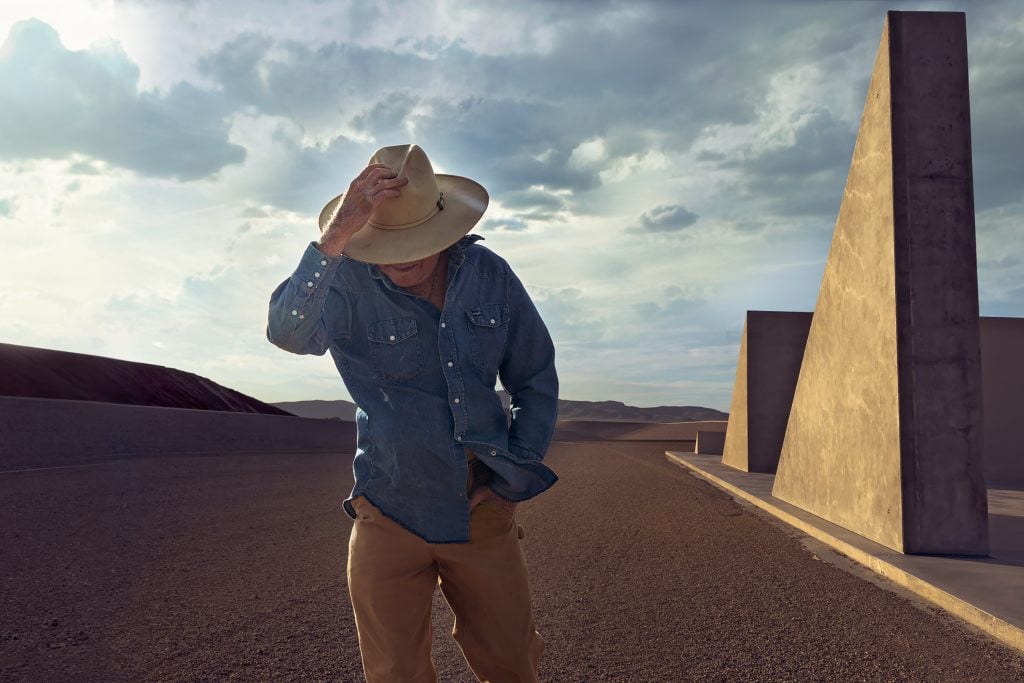
Last month we were driving down an unpaved road in a vast high desert valley of the Great Basin in Nevada, about three and a half hours outside of Las Vegas. A cloud of dust trailed behind our SUV, visible for miles, though no one was there to see it. The destination was City, the mile-and-a-half-long, mile-wide monumental sculpture, which revered first-wave contemporary land artist Michael Heizer constructed over 50 years, from 1970 to 2022.
The landscape was enthralling, punctuated by sage and tumbleweed, and Mark, the driver, whose family has been in this remote area for generations, pointed out the names of the majestic rock formations that towered all around us—tall, thin spires called hoodoos and strange, sculpture-like stacked globular sandstone forms with names like Fish Fossil, Five Fingers, and Golden Gate Range. Only six people are allowed to visit City at a time. I traveled solo, so there were four other passengers. Mark told us he had driven Heizer here once last year. “I asked him questions, and he wouldn’t really say anything,” he recalled. “He just said, ‘Use your imagination.’ We talked about cows. And he remembered my father and grandfather.”
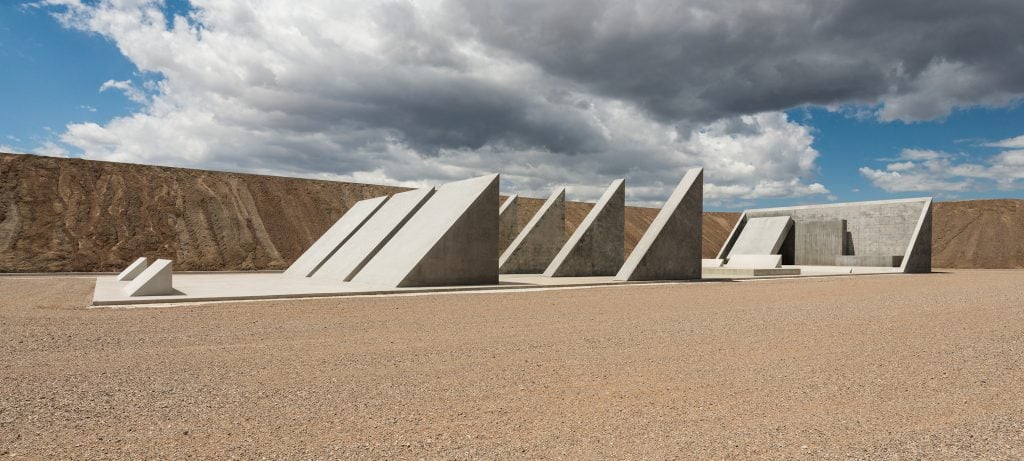
45°, 90°, 180°, City ©Michael Heizer. Courtesy of Triple Aught Foundation. Photo: Ben Blackwell
Mark, who works for the nonprofit Triple Aught Foundation who manages the site, has one of the coolest and strangest jobs; to shuttle people from the meeting point in the town of Alamo through the desert and listen to their conversations en route, and then hours later, when the sun has just gone down and the sky is a rapture of violet and orange, hear those same people forever changed, rhapsodizing about their journey through a sculpture.
As we drove further, City emerged like an oasis in the vastness. We were dropped off for the customary three-hour visit, with a few ground rules, starting with, “There are rattlesnakes this time of day. They sit in the shadows, so look before you sit down.” Everyone immediately split up and went their separate ways.
Monday was the artist’s 80th birthday, and the state of Nevada declared it Michael Heizer Day, awarding him a key to Las Vegas. After visiting City, it’s clear to me that Michael Heizer Day should be observed nationally, that he has created a modern wonder of the world, a true masterpiece.
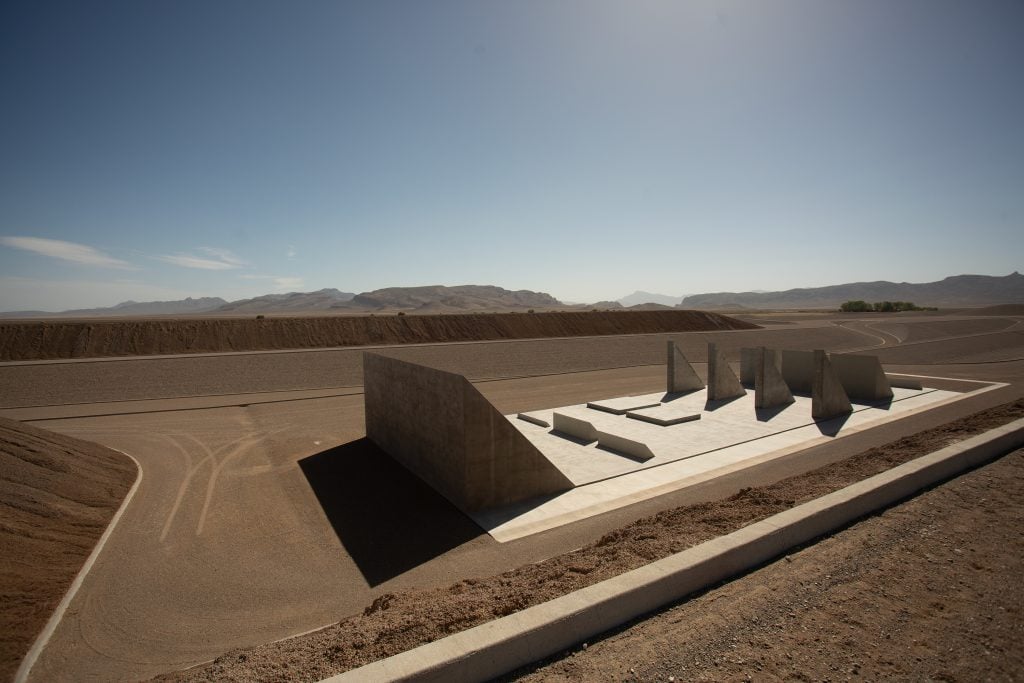
45°, 90°, 180°, City. ©Michael Heizer. Courtesy Triple Aught Foundation. Photo: Joe Rome
Leading up to my departure, I would halfway-jokingly say I was embarking upon a “closer to god” trip. After having visited, I feel like the City experience has rewritten my DNA, or at least rebooted my brain. Yes, it’s that profound. To be dropped off and to wander and explore freely, simply existing within and being part of a colossal artwork for hours was an intimate way to get in touch with the art, oneself, and—it’s hard to say this without sounding overly grandiose—something greater. It’s a way to feel true connection, but also such comfort in the humbling notion that you are a speck in the universe. The experience is that intense. It is confounding and healing and mystical.
City isn’t just the sculpture itself; it encompasses the breathtaking terrain and surrounding mountain ranges and vistas and horizons, and it is framed by the shadows that cast dramatically and angularly transform the structures, and the wildlife that inhabits it. The sky is its canvas and the stars. It is its own ecosystem, an awe-inspiring, soul-cleansing, liberating, transcendental experience. Photos don’t do it justice, and every element is stylized and triggers emotions, every inch a textural rock garden of colossal proportions.
The one suggestion I would make to potential visitors is to pick the perfect co-pilot or, better yet, go alone. Then you won’t have to talk about the everyday world. It was such a gift for me to focus on the work for the entirety of the journey there, to make sketches, take notes, and make voice recordings, hearing the wind blowing and my footsteps echoing. It was liberating to disconnect from reality and become part of City and question it and explore it and connect to whatever wavelength it is emitting. Solitude became part of the joy and process. “Transportive” is a hard-to-describe feeling, but you know it when it consumes you, like your body is in multiple places, times, existing in different dimensions. There was an electric frisson that overtook me while I meandered around City. This is a palpable feeling I got once before when visiting Pompeii.

4/5 Pit, City © Michael Heizer. Courtesy Triple Aught Foundation. Photo: Mary Converse
Heizer is sphinxlike about the process of construction, but there are two main structures—one was presumably built in the 1970s and the latter came in the 1980s or 1990s. Once you arrive, the mystery deepens as you are liberated from the social media spiral—no photos are allowed. I was ashamed I even brought headphones once there and didn’t want to detract from the connection and listen to music. My voice recording notes devolved into unintelligible beat poetry. Mid-transcendence, it’s hard to make sense, to translate bliss.
After the first hour, I regretted bringing a backpack, modern appliances, buttoned clothes—the detritus of modern life. I even began to fantasize about running around in a loincloth, then, simply, naked. it was as if City was reverting me to a primeval state.
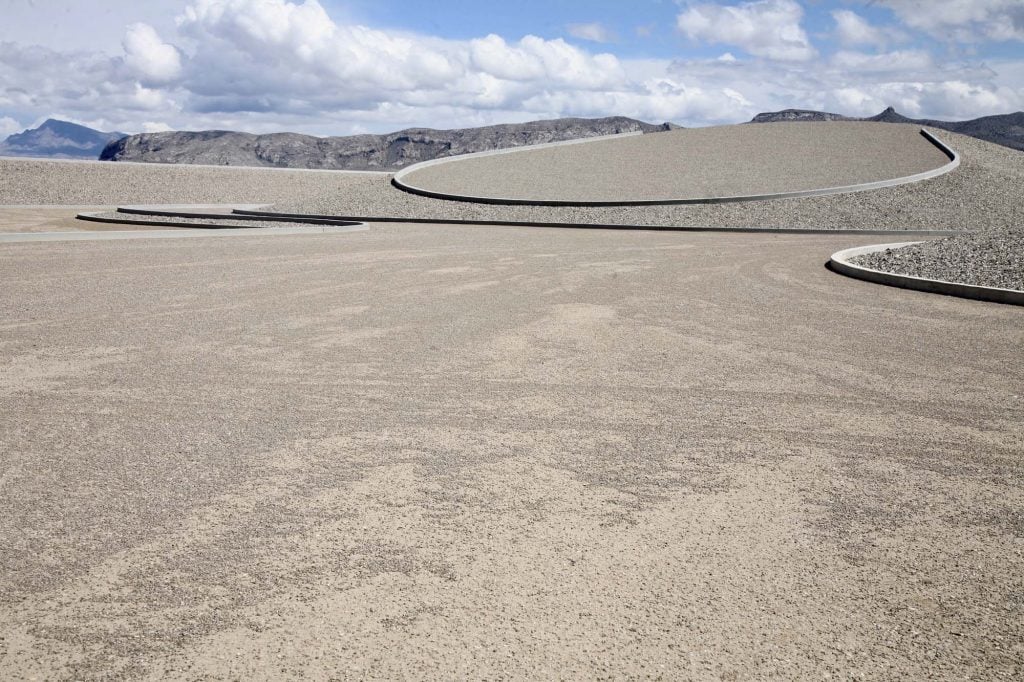
© Michael Heizer. Courtesy Triple Aught Foundation. Photo: Ben Black
At some point as you wander, the landscape’s textures seem akin to an Isamu Noguchi garden; then, you come upon a structure that makes you feel like you are on another planet and encountering an alien city. The classified U.S. Airforce facility Area 51 is about 35 miles from Alamo, and alien trinkets like keychains are sold at the gas station, with UFO hunters regularly making pilgrimages as close to the government site as possible. Is it a futuristic alien city out of Asimov, or a weathered, ancient Lovecraftian place? Around a bend, you are an archaeologist discovering ceremonial mounds. City transforms, and it transforms you. You evolve and devolve and shift personae and place as you amble.
It’s not all otherworldly either. Some shapes echo concrete wheel stops in parking lots, and gutters and other hallmarks of contemporary architecture abound, added to that are the traditional materials. Both ground the piece. But still, all of this harks back to incredibly difficult monolithic pieces like the moai of Rapa Nui or Stonehenge, the endurance test and plight of construction are part of the process and bring the makers closer to a higher calling.
Some of the major themes explored in City are time and space. In the Mesozoic and Paleozoic eras, the desert was awash in shallow seas. Driving up, we passed through a desert plain replete with maritime fossils and geological formations sculpted over 30 million years of tectonic activity, volcanic events, and erosion from ancient seas and lakes. Then, there is the sculpture itself, which pushes the boundary of what a sculpture is. City’s sheer magnitude calls to mind ancient petroglyphs. Heizer’s 50-year gestation seems interminable for a contemporary artwork, but in the grand scheme of the earth’s narrative, City is an eyeblink that references the past, present, and future.
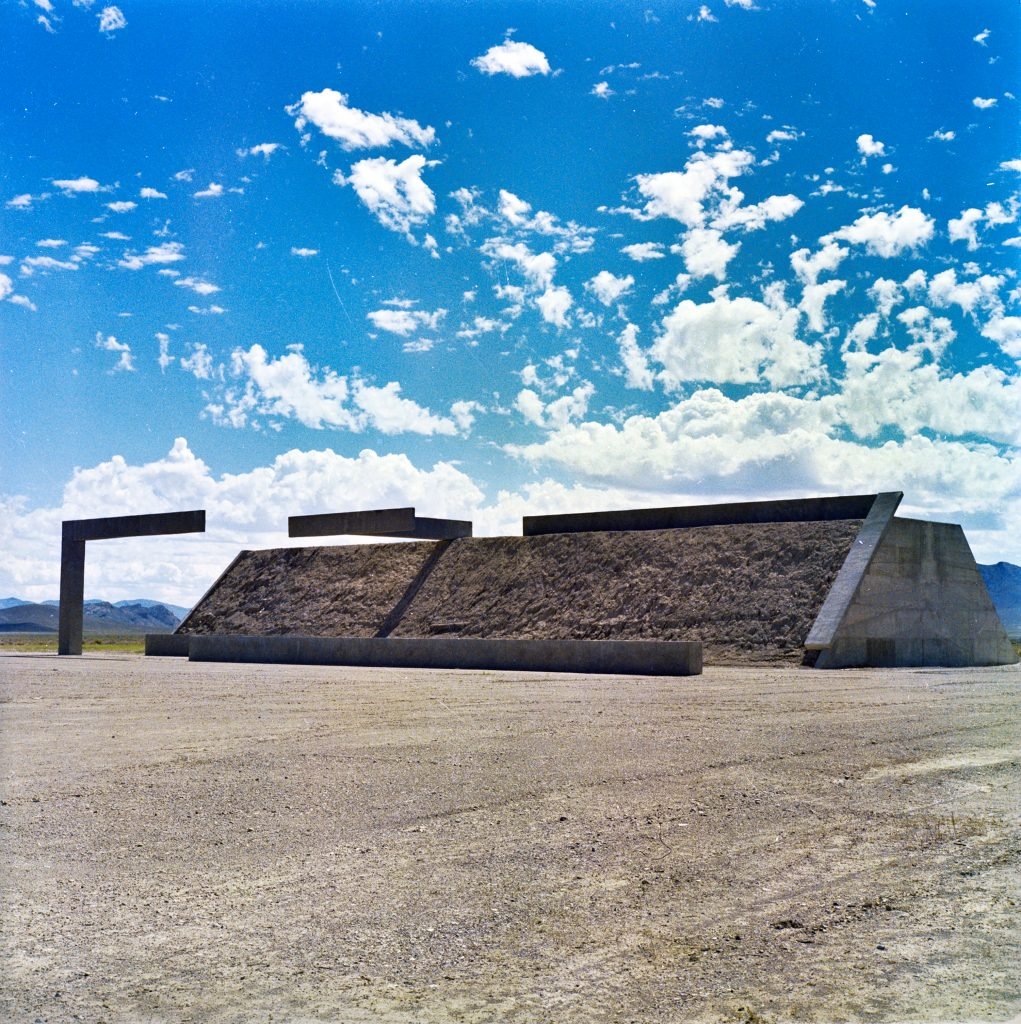
Complex One, City. ©Michael Heizer. Courtesy Triple Aught Foundation. Photo: Robert F. Heizer
In one jarring locale, I came upon a cement mixer with an American flag painted on its drum and other trucks. This hammered home that the piece is also about building and construction, and that it is a work-in-progress, requiring maintenance and upkeep, as well as staff. That there are so many human stories here that are part of this narrative. Created mostly from locally sourced everyday materials like dirt, stone, and rock, at certain points, City can look like a quarry or construction site and also seems to reference Nevada’s historical mining belt that surrounds the valleys.
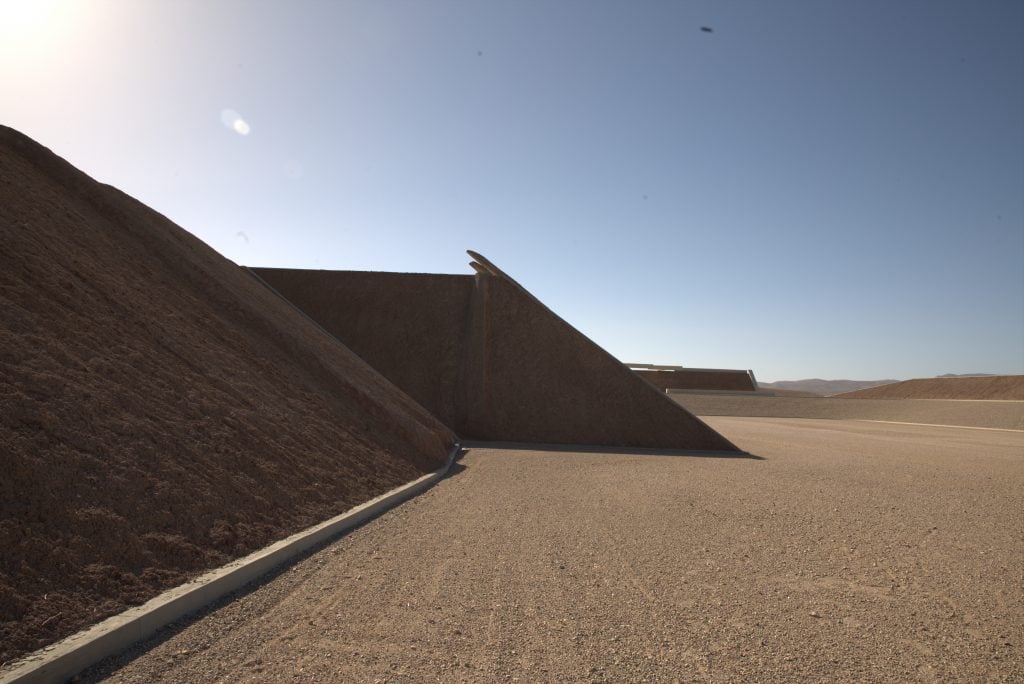
Complex One and Complex Two, City. © Michael Heizer. Courtesy Triple Aught Foundation. Photo: Joe Rome
City makes you think about all of the behind-the-scenes stories that went into making it, from the workers commissioned to come in and drive trucks of gravel and shape the mounds and pour concrete, explaining to their wives in 1974 what their day was like, working for the mysterious man making a city in the middle of nowhere. And what was Heizer’s experience making this and the evolution of that over the years? How did he know it was finally completed?
Walking towards 45°, 90°, 180°, one of the two main structures, you see what appears to be a bunker embedded in a mound, with apertures that create an illusory effect. It is revealed to be a series of geometric shapes laid out upon a platform. I walked here with extreme trepidation. It was as if one was walking upon hallowed ground.
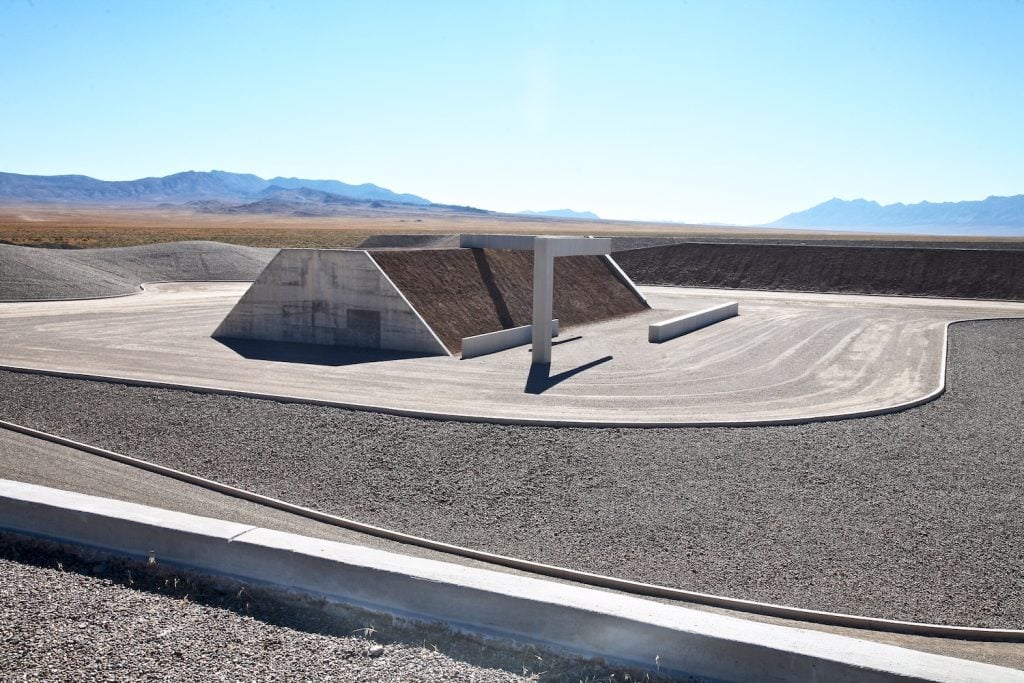
“Complex One,” City. © Michael Heizer/ Triple Aught Foundation. Courtesy of the artist and Triple Aught Foundation. Photo: Mary Converse.
Complex One, one of the earlier parts of City, dates back to the 1970s and echoes the Karnak temple complex in Luxor, as well as other historical structures—yet it remains unlike anything you’ve seen before. It is a study in different textures and angles, and at one point two beams crisscross, revealing an aperture framing the crystal blue sky behind; it rendered the building two-dimensional, a mosaic. I looked deep into the craggy surfaces for some kind of message or pattern, but it was virgin naked rock.
City is defined by what it intrinsically is: an artwork about architecture, an example of it, and a sculpture that evokes archaeology. One day, it will be a relic itself, meant to withstand the ages, awaiting whoever—or whatever—discovers it eons from now.
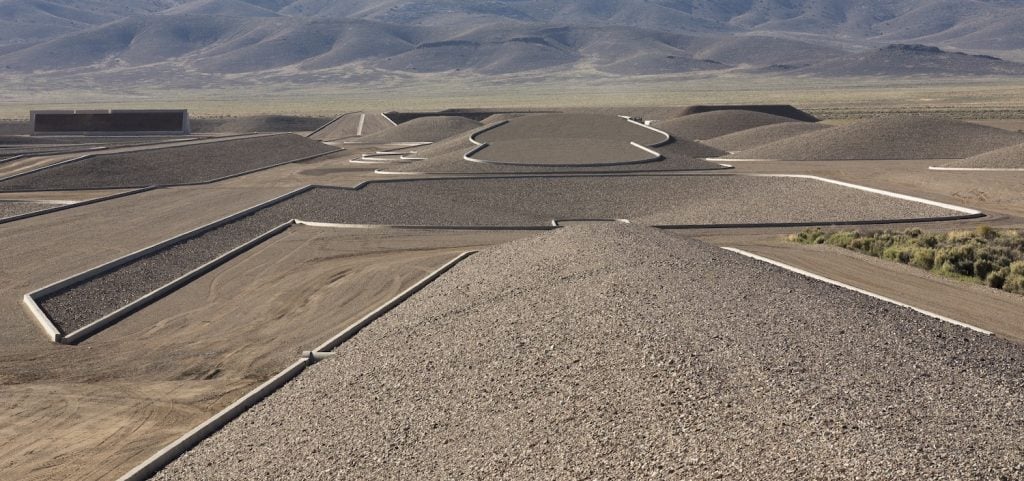
Michael Heizer, City (1970 –2022). © Michael Heizer. Courtesy of the Triple Aught Foundation. Photo: Eric Piasecki.
Modernism, brutalism, Americana, sci-fi manifest destiny, mysticism, community, entropy, love stories, religious experience, the history of art, the story of us—City holds all this and more. It unfolds through the eyes of each journeyer, their narratives weaving into its own. Seeing this work has been a dream fulfilled, yet I wasn’t expecting it to be a high point of a lifetime. More than an example of architecture, City explores it. More than a monument, it delves into the ancient and the unknown. It endures, timeless and profound.
Submissions for the 2024 visitation season have officially closed. The Triple Aught Foundation will open requests for the 2025 season via an online form, which will be available on January 2, 2025, at 12:01 p.m. EST / 9:01 a.m. PST. The 2025 season begins May 13 and ends November 13. Visitation days are Tuesday, Wednesday, and Thursday.





